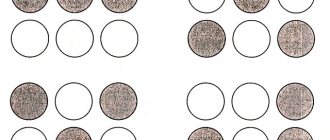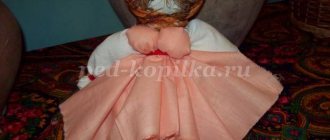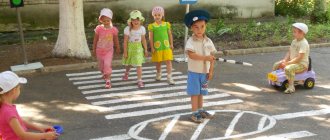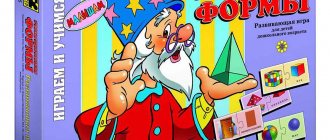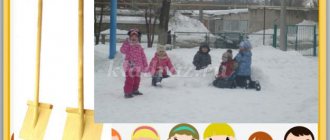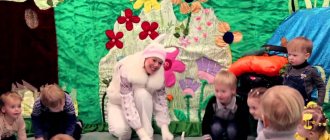Classification methodology
There are several criteria for classifying games and dividing them into groups. This makes it possible to choose an activity that best suits specific pedagogical tasks.
Self-study
Selection of materials for classes
Depending on the content, classes are divided into various types aimed at improving a particular skill in children. Accordingly, various materials are used, such as:
- toys;
- Pictures;
- various household items;
- board games that you can print out yourself.
Low mobility games in the preparatory and senior groups of preschool educational institutions
The role of the teacher in organizing games
Based on the type of lesson, level of training of the group and their independence, the teacher’s influence on the process can be either primary, for example, as a leader, or secondary, when he observes from the side and only if necessary directs actions in the right direction.
Didactic classes as a topic for teacher self-education
Throughout his professional career, a preschool teacher constantly improves himself, practices and improves his speech and methods of interaction with children and their parents. And didactic classes play a significant role in this, facilitating the learning process for young students. Self-education on this topic is possible by reading relevant literature.
Theme “Beautiful Flowers” for drawing lessons in middle groups
It is no secret that the most successful form of learning for preschoolers is a didactic game. This can only be achieved with proper design, planning and presentation of the material by the teacher, so a very important factor is the continuous self-development of the teacher.
Conducting didactic classes
Pedagogical classes for children in the senior group of kindergarten involve techniques that can be divided into three categories.
- Verbal. The priority goal of developing the speech center in children of the older group is to form a comprehensive vocabulary and a set of non-verbal skills.
- Visual. Abstract thinking is poorly developed in children of this age. They have a leading visual-figurative model of perception. The teacher’s task is to combine these methods of perceiving information by demonstrating visual images.
- Practical. It is important that during the lesson the child creatively embodies his vision of the game in various forms of artistic implementation: draws the object of the game; I made an applique (this method fits in very well after playing with numbers); made a craft or molded something out of snow if the activity takes place outside in winter.
